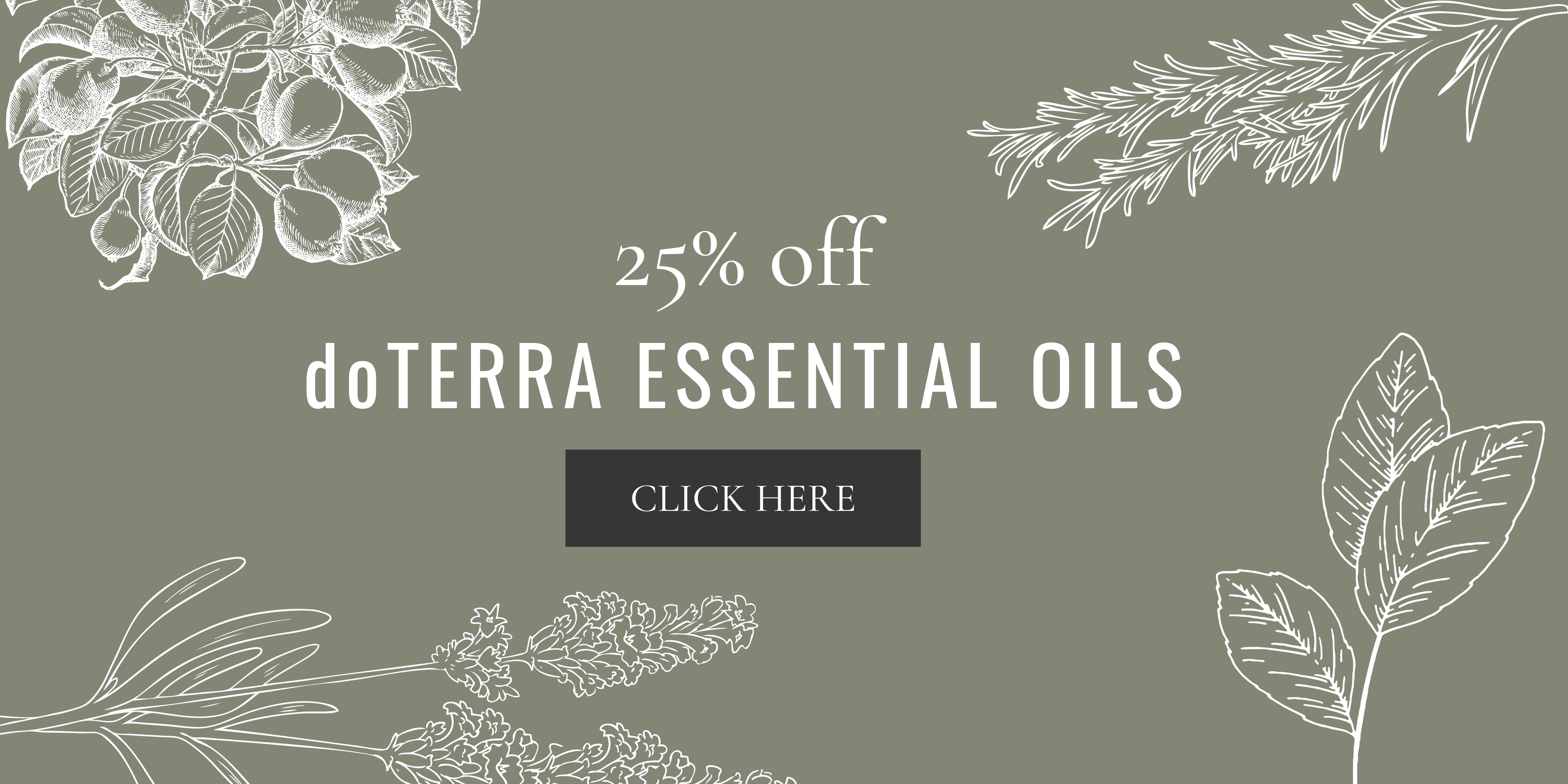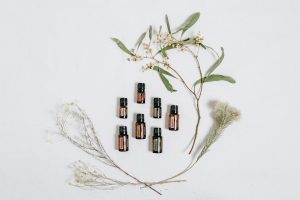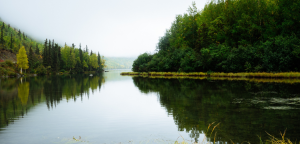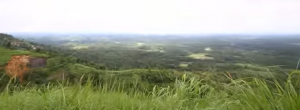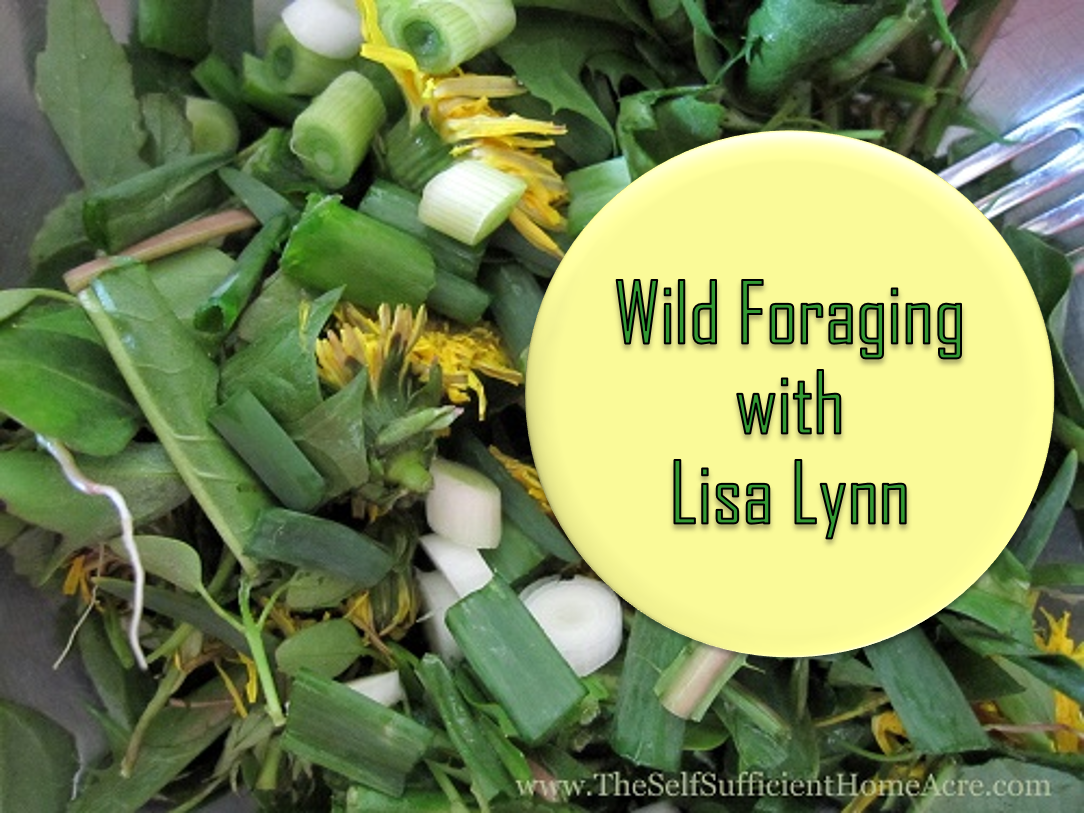
Foraging for Wild Herbs with Lisa Lynn
The birds chirping and snow melting is putting a little SPRING in my step – towards heading outdoors a bit more!
Not too long ago, I met Lisa Lynn – creator of The Self Sufficient HomeAcre.
She is on a quest to become less dependent on the grocery store for necessities. Featured in From Scratch magazine, Lisa Lynn embraces living simply and getting back to our roots. Sound like your kinda girl? I thought so too.
Let’s take a stroll with her in this guest post on…
Foraging for Wild Herbs
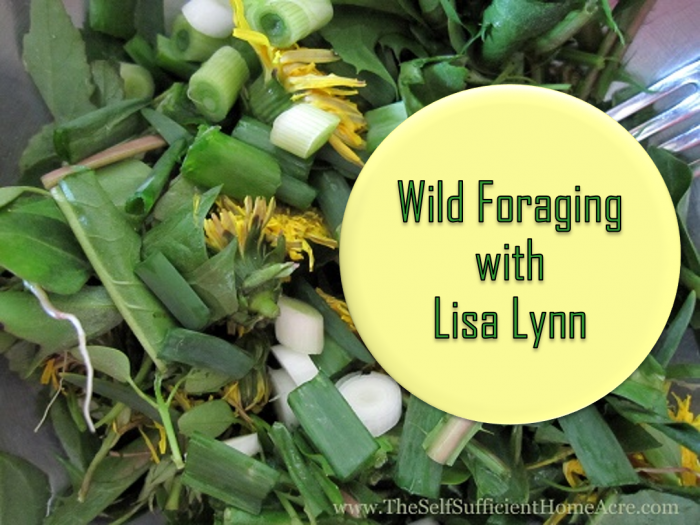
Why Forage?
Humans have been foraging for food and medicine for ages. Before doctors began prescribing drugs and grocery stores were invented, we found or grew most of our own food. In the push to urbanize the world and mechanize our food system, people have lost the knowledge and skills needed to find foods in the wild. Our diets have become nutrient poor and calorie dense at the expense of our pocketbook and our health. Wouldn’t you like to return to a simpler, and healthier, way of life? The good news is that you can!
Getting Started
Foraging for wild foods is a great way to increase your self reliance, enjoy a healthier lifestyle, and spend time outdoors. But before you get started, there are some important things to consider. First, and most importantly, you need to play it safe. Don’t collect food items along polluted roadways or in areas where high levels of lead and other toxins may have accumulated. We want to stay in good health, so keep in mind that soil around buildings from before the early 1970s may have dangerous levels of lead from lead paint. Also stay away from chemically treated lawns and agricultural fields. We don’t want pesticides on our wild salads! Make sure you aren’t trespassing or collecting in nature preserves where it isn’t allowed.
What You’ll Need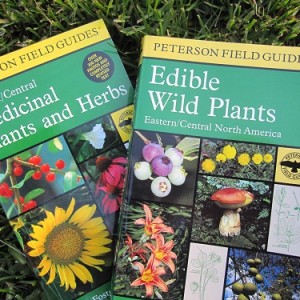
Purchase a good edible wild plant identification guide for your area, such as one of the Peterson’s Guides. Study the book ahead of time and learn the basic terms used for positive identification of wild plants. You’ll want to know the basic leaf types (needles, simple, compound) and the difference between opposite and alternate leaves. Being able to tell woody plants from herbaceous plants and deciduous from evergreen will be very helpful too. Some guides list plants that look similar to the edibles so you can tell them apart. Be sure that you are not picking poisonous plants for your lunch.
Take sunscreen, drinking water, your cell phone, a map, and a friend along on your outing, especially when heading into areas you’re not familiar with. A collection bag or basket will come in handy for carrying the bounty home. Many herbs will start to wilt if they aren’t used soon after picking, so try to forage in an area close to home. Plant material has the best flavor and nutrition early in the day, so try to get out there to forage before noon, for best results.
What to Look For?
A good guide will list the seasons for collecting each plant and what part of the plant to use. It will also give the preferred methods of preparing plant materials. I highly recommend starting with a few easy to find, well known plants if you are a beginner. Dandelions, mulberries, catmint, lambs quarters, and garlic mustard are good plants for the newbie forager.
Dandelion
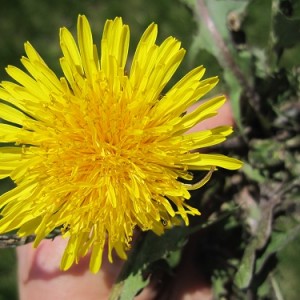
Dandelion has a rosette of toothed green leaves growing from the base of the plant. The yellow flowers are well known by children who like to pick handfuls of them in the spring, early summer, and again in the late summer. All parts of the plant are edible. The roots may be dried for making a healthful tea in the winter. This tea is reputed to be a strong detox remedy. Leaves, flowers, and buds may be tossed in a salad or boiled for greens. The entire plant is high in nutrients that make mere lettuce seem pale in comparison.
Catmint
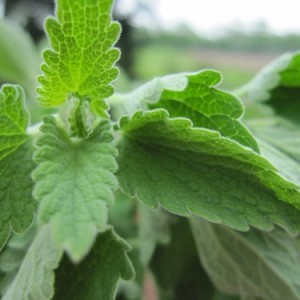
Catmint, or catnip, is a member of the mint family and is wonderful for making herbal tea. Collect the leaves in the morning for the strongest flavor and use immediately or dry for making tea later. The fuzzy, aromatic leaves are believed to have a calming effect and to help relieve insomnia. These herbaceous plants have toothed, fuzzy leaves and small lavender colored flowers. The entire plant exudes a minty scent when brushed. Be sure to store your dried catnip out of the reach of your pet kitty!
Mulberries
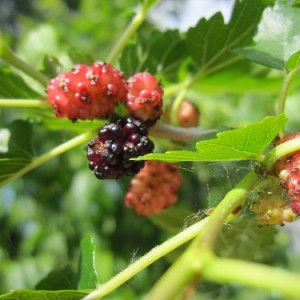
Mulberry trees grow over most of the United States and provide delicious purple or white berries for the forager. The leaves of this deciduous tree may be shaped like a pointy oval or a mitten, often with leaves of both shapes on the same tree. Look for the sweet, edible berries from mid-June into July. Birds will often be a good indicator since they love mulberries and will flock to a fruiting tree before the fruit is even ripe. Eat the berries fresh or you may freeze, dry, or make preserves from them to enjoy over the winter.
Lambs Quarters
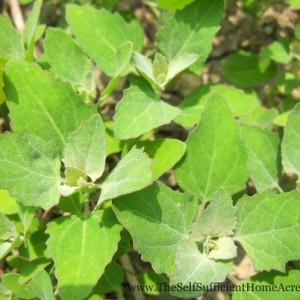
Also known as wild spinach or pigweed, lambs quarters grow throughout the United States in waste areas and in disturbed soil. The toothed, diamond shaped leaves taste best in salads in late spring and early summer, before they become tough. Although they remain edible in the heat of summer, they are best cooked as greens. The underside of leaves have a whitish coating that may be slightly gritty, so wash the plants well. Lambs quarter have an upright growth habit with multiple branches, the small, green to reddish flowers are borne in clusters.
Garlic Mustard
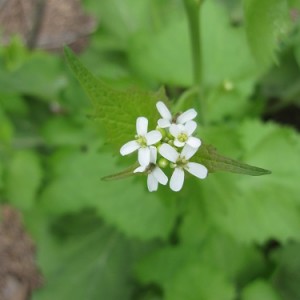
This herb was imported to the US and has become a very invasive species. You can do your part to clean it up from our native areas and make some awesome salads and greens with them all summer long! The whole plant has a garlicky scent when leaves are brushed. Although the flavor is quite strong and some people don’t care too much for garlic mustard, it is a highly nutritious plant full of bioflavonoids. The small white flowers will produce seeds even after the plant is picked, so don’t toss them in your compost pile!
Now What?
Now that you’ve tried your hand at collecting some easily identifiable and widely available edible plants, you can step it up a notch! Try foraging for wild rose hips in late summer to make tea, use burdock stems in spring to cook up some battered Gardooni, or collect some sweet sap from birch or maple trees in the very early spring to drink as is or make into syrup.
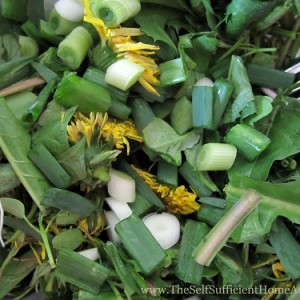
Dandelion Salad
If you are inexperienced with identifying and collecting plant material, you might wish to look for foraging classes in your area or ask to tag along with a friend who has more experience. Foraging for wild foods is a fun and rewarding way to provide meals, enjoy nature, and connect with our ancestors. Just be completely sure that you have positively identified all plants before you start to nibble!
Visit Lisa Lynn and learn more at The Self-Sufficient Home Acre.

 Previous Post
Previous Post Next Post
Next Post